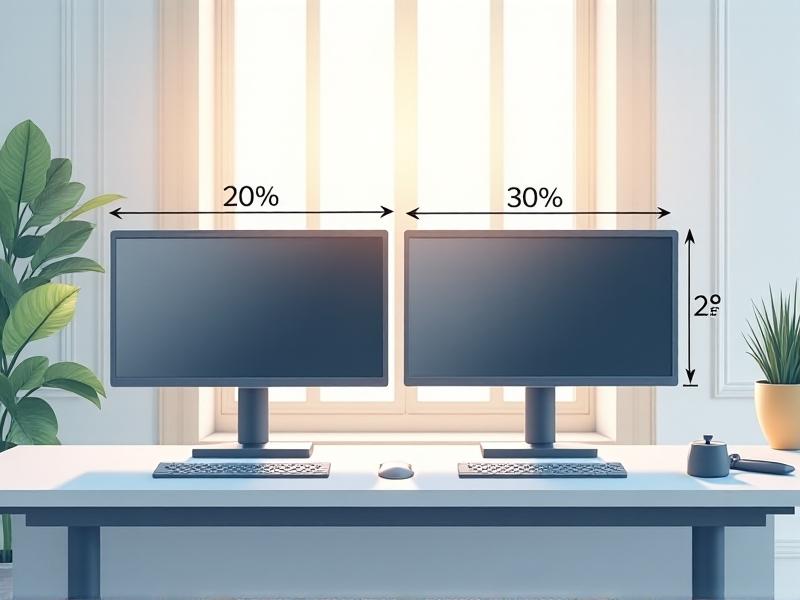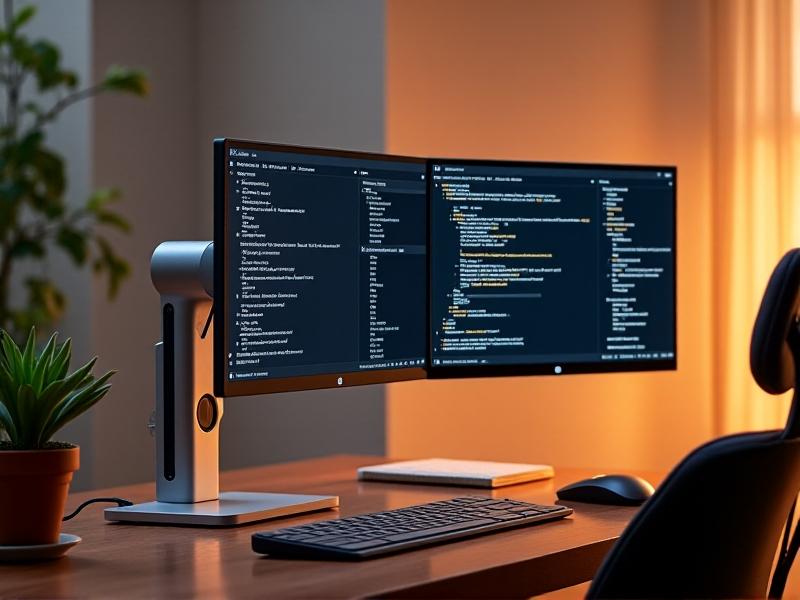```html
Understanding Neck Rotation Strain in Dual Monitor Setups

Many professionals rely on dual monitors to boost productivity, but improper alignment can lead to chronic neck strain. When screens are placed too far apart or at mismatched heights, users unconsciously twist or tilt their heads for hours, overloading cervical muscles. Research shows that even a 15-degree neck rotation sustained for prolonged periods increases pressure on spinal discs and reduces blood flow to muscles. Over time, this can result in stiffness, headaches, and reduced mobility. The problem intensifies in setups where one monitor serves as a primary screen, forcing repetitive head turns. Recognizing these risks is the first step toward creating a workspace that supports long-term physical health.
Ergonomic Principles for Monitor Placement

Effective dual monitor setups adhere to three core ergonomic principles: height, distance, and angle. Monitors should be elevated so the top third of the screen sits at eye level, preventing upward or downward neck flexion. Ideally, screens remain an arm’s length away to reduce eye strain, with the secondary monitor placed close enough to the primary screen to minimize head rotation. A 10-20 degree inward tilt helps maintain neutral neck positioning. These guidelines stem from OSHA’s workplace standards, which emphasize maintaining the spine’s natural “S-curve” during computer use. Implementing these principles reduces lateral neck movement by up to 70%, according to a 2022 Cornell University ergonomics study.
Step-by-Step Guide to Aligning Dual Monitors

Begin by centering your primary monitor directly in front of your chair. Use a carpenter’s level to ensure it’s perfectly horizontal. Position the secondary monitor adjacent to the primary, angled inward so both screens meet at the center of your keyboard. If using vertical stacks, place the upper monitor no higher than 15 degrees above your natural sightline. For width adjustments, ensure you can see the junction between the two screens without turning your head more than 10 degrees. Desk-mounted monitor arms like the Ergotron LX provide granular control over positioning. Test your alignment by opening a document across both screens—your eyes should move freely without head movement.
Essential Tools for Achieving Optimal Alignment

Invest in adjustable monitor arms to eliminate desk clutter and enable precise positioning. Pneumatic arms like the AmazonBasics Premium Single permit height and tilt adjustments without tools. For budget-conscious users, monitor risers with built-in storage can elevate screens to ergonomic heights. Software tools like DisplayFusion help manage window placement, reducing excessive head turns. Blue light filters and matte screen protectors minimize glare-induced leaning. Consider adding a USB hub to centralize cable management, which indirectly supports better posture by reducing desk sprawl. For asymmetrical setups, rotating one monitor into portrait mode can align content vertically, though this works best for coding or document review.
Integrating Posture and Movement Into Your Routine
Even perfect monitor alignment loses effectiveness without complementary posture habits. Keep shoulders relaxed and elbows bent at 90 degrees, with wrists floating above the keyboard. Use a reminder app like Stretchly to prompt hourly microbreaks for neck rotations and chin tucks. Incorporate dynamic sitting—subtly shifting weight or briefly standing during calls. A balance ball chair or saddle stool encourages core engagement. Pair your setup with a document holder placed between monitors to avoid looking down. Studies show alternating between sitting and standing every 30 minutes reduces cervical spine pressure by 54%, making adjustable desks a worthy investment for dual monitor users.
Real-World Adjustments and Their Impact
A software developer reported chronic neck pain after eight-hour coding sessions with vertically stacked monitors. By switching to a side-by-side horizontal layout using arms, she reduced head tilting. Adding a 15-degree downward tilt to her secondary monitor brought code documentation into her peripheral vision. Over six weeks, her neck mobility improved by 40%. Another case involved a graphic designer who placed his secondary monitor too far right. After repositioning it closer and lowering the height, his weekly chiropractor visits decreased from three to one. These examples underscore that small, intentional changes yield significant health benefits.
Sustaining Your Ergonomic Setup Long-Term
Ergonomics isn’t a one-time fix. Monthly, check that monitors haven’t shifted—use a smartphone inclinometer app to verify angles. Reassess your setup if you change chairs or desks, as seat height alterations affect monitor positioning. Listen to your body: recurring tightness may signal needed adjustments. Consider annual ergonomic assessments, which some employers subsidize. Over time, habits like leaning forward or cradling the phone between ear and shoulder can undo even ideal setups. Pair physical alignment with mindfulness techniques to maintain neutral postures during intense focus periods.




